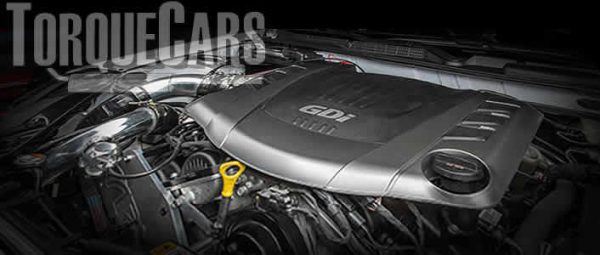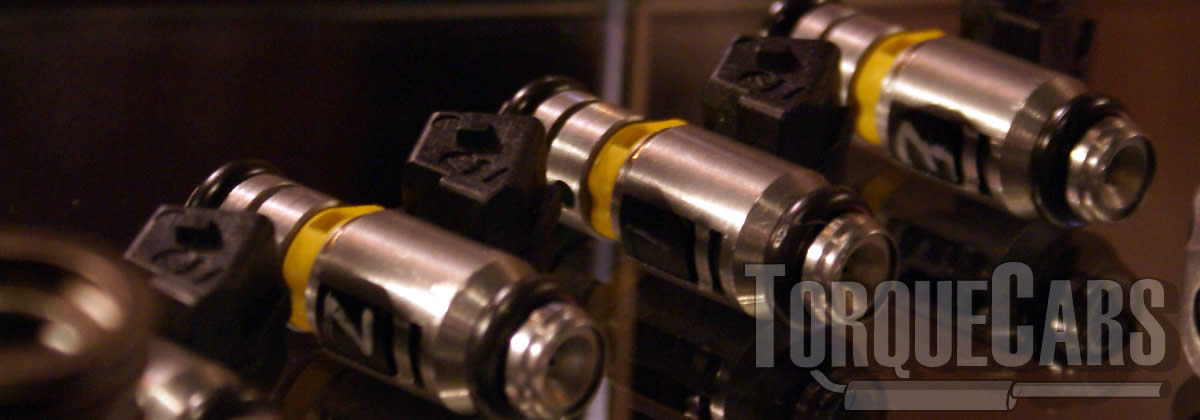Tuning the Hyundai Tau
"Tuning the Hyundai Tau and best Tau performance parts."
We examine Tau tuning and point out the greatest upgrades for it.
It's refreshing to see a company releasing a V8 engine, and it is actually quite responsive to upgrades with a supercharger lifting power to around 500hp.
While not high revving or particularly lively, it boasts pure low end torque and muscle and works well with a variety of upgrades.
The Hyundai Tau blocks make a good tuning project and with carefully chosen motorsport enhancements like a remap, turbo upgrades and camshafts you will substantially maximise your driving opportunities.
We provide a guide to Tau tuning and outline the best modifications. Hyundai Tau make a good tuning project engine and with the ultimate uprated parts like a remap, turbo upgrades and camshafts you will definitely enhance your driving pleasure.
We rely on our visitors to pass on tips and tell us about their projects and what worked on their car, and this article is the culmination of the feedback we have received. First let us look at the history and specs of this engine and then consider which tuning modifications work best on it.
History of the Engine
The V8 Tau engine has been fitted with a supercharger when Hyundai wanted to show what this is capable of, and we are sure this great block will find it's way into many high performance cars.
It also boasts cylinder deactivation and replaces the less efficient Omega engine range. The engines sound great and run best on high octane grades of fuel.

- 4.6 Tau MPi (366PS) G8BA 361 hp @6500 324 lbft @ 3500
- 4.6 Tau MPi (390PS) G8BA 385 hp @6500 333 lbft @ 3500
- 5.0 Tau MPi (400PS) G8BB 395 hp @6400 369 lbft @ 3500
What are the most effective Tau tuning mods
The greatest tuning parts on an engine are in our opinion the ones that give the best value for money.
We won't be swayed by popular Tau tuning parts, they need to be cost effective.
The cam profile plays a big part in the engines power output so cam upgrades make quite a large difference. The intake and exhaust durations will alter depending on the chosen cam profile, so large bhp gains are on offer for cam upgrades.

Fast road camshafts tend to increase the bhp and torque throughout the rev range, you could sacrifice a little bottom end bhp but high end rpm power will improve.
Competition camshafts, increase the high end rpm power band but as a result the car will not idle smoothly and low end power nearly always suffers.
For a typical daily driver you need to optimize your engines power to your usage of the car.
I would be surprised if you have thought a Motorsport camshaft is a pleasure to live with when in heavy traffic.
Different Tau engines respond better to different camshaft durations check your engine on a rolling road.
The engine timing and injectors and fuel pump also have a large bearing on the torque gains you'll get.
Extending exhaust or intake durations can alter the torque band and on most engines the exhaust and intake durations do not need to match, although most cams and tuners use matched pairs there are some advantages to extending the intake or exhaust durations.
Please watch our introduction Video tutorial to car tuning. Be sure to subscribe and support our new channel.
How to tune your car
- Improve the handling
Focus on Suspension improvements, such as coilovers and make sure the bushings are in good order and that the alignment is correct. Then focus on improving the brakes, with a big disk brake conversion kit and fast road brake pads.
- Remove restrictions
Focus on the intake and exhaust with filters being the common point of restriction in a tuned car. Intercoolers may also become restrictive on turbo engines so this may also need to be uprated.
- Burn more fuel & air
Increase the fuelling so it matches the air coming into the engine. The ratio is important so you need to improve the fuel pump and injectors, so the head mods, big valve conversions, fast road camshafts and forced induction upgrades extra supply of air is adequately met.
- Test and replace any weak parts
Weak areas are commonly the clutch, the turbocharger and pistons and crankshaft in a highly tuned engine. Makes sure these components will cope with your power aspirations.
- The Tune or Remap
A cars ECU controls the fuel, timing, spark and even the turbo in some cases, so to fully extract your gains you should remap the car last and this will fully release the power. Some cars are easy to map, and others require piggyback ECU's or aftermarket ECU's but this is the most vital step of your tuning project.
Modifying to Stage 1:
Panel air filters, Sports exhaust manifold, Remaps/piggy back ECU, Intake headers, Fast road camshaft, Drilled & smoothed airbox,
Modifying to Stage 2:
fuel pump upgrades, high flow fuel injectors, Fast road cam, Ported and polished head, Sports catalyst & performance exhaust, induction kit.
Modifying to Stage 3:
Twin charging conversions, Engine balancing & blueprinting, Adding or Upgrading forced induction (supercharger), Internal engine upgrades (head flowing porting/bigger valves), Crank and Piston upgrades to alter compression, Competition cam.
ECU flashing helps to establish the full potential of all the parts you've done to your Tau.
 It will usually give around 15% on NASP engines, but you mileage will vary depending on the parts you've done and the condition of your engine.
It will usually give around 15% on NASP engines, but you mileage will vary depending on the parts you've done and the condition of your engine.
It is vital to any tuning project to pull more air into your Tau
Plenum take the air during the suck phase from the filter and allow it to be pulled into the engine cylinders with fuel for the squish phase.
Structure and flow characteristics of the Plenum can make a big change to fuel delivery on the Tau.
We often see headers are ripe for aftermarket parts, although a few manufacturers provide reasonably well designed headers.
Fitting big valve kits, getting port matching and head flowing will also lift bhp, & importantly will make space for a greater bhp increase on other upgrades.
Which turbo upgrades are best?

NASP engines need quite a lot of work when you add a turbo, so we have a separate guide to help you take into account the pros and cons of going this route on your Tau
The more air to get into an engine, the more fuel it can burn and uprating the induction with a turbocharger upgrade makes massive power gains.
When an engine has forced induction parts are going to make more power and we find turbo engines use many forged and stronger components.
There are reliable limits for every engine, with some being over specified and some just sufficiently able to handle stock power
See where you'll find these restrictions and fit higher quality crank and pistons to survive the power.
It's not unheard of guys spending a lots of money on turbo charger upgrades on the Tau only to watch the engine block go up in smoke when it's been finished.
Bigger turbo units tend to suffer a bottom end lag, and low capacity turbo units spool up quickly but don't have the high rpm torque gains.
Thankfully the world of turbos is always moving on and we are seeing variable vane turbos, where the vane profile is altered according to speed to lower lag and increase top end bhp and torque.
Twin scroll turbos divert the exhaust gases into 2 channels and direct these at differently angled vanes in the turbo charger. They also boost the scavenging effect of the engine.
It is not unusual that there is a limitation in the air flow sensor AFM/MAF on these engines when considerably more air is being drawn into the engine.
We note 4 bar air sensors coping with quite large power gains, whereas the OEM air sensor was restricting performance at a much lower level.
Adding a supercharger or additional turbo will make large bhp and torque gains, although more difficult to setup. We have a twincharger bhp and torque adding guide if you want to read more.
Fuelling
When you improve the bhp you will need to ramp up to the fuelling.
More bhp needs more fuel.  We would recommend you to over specify your injectors flow rate.
We would recommend you to over specify your injectors flow rate.
The rule of thumb is to add 20% capacity when buying an injector, this takes into account injector deterioration and affords you some spare capacity should the engine require more fuel.
We think this one is common sense, but you'll need to match your fuel injector to the type of fuel your car uses as well.
Choosing the right performance exhaust
One of the most common mistakes and problems we see in tuning projects is usually down to the exhaust, or rather a poorly chosen exhaust for your engine.
Only look to upgrade your exhaust if your exhaust is creating a restriction.
On most factory exhausts you should find that the flow rate is fine even on modest power gains, but when you start pushing up the power levels you will need to get a better flowing exhaust.
Sports exhausts can help equal out the flow of air through the engine.
But if your exhaust pipe is too big, ie: it's over 2.5 inches bore, you will lose a lot of your flow rate and end up sapping power and torque.
Usual exhaust restrictions are traced to the catalyst installed, so adding a better flowing performance alternative will help avoid this restriction.
Weak spots Issues & problem areas on the
The engines are generally reliable and solid as long as they are regularly serviced and maintained.
Regular oil changes are vital on the , especially when tuned and will help extend the life and reliability of the engine.
High oil consumption is a common complaint among owners of the Tau engine which fouls spark plugs, and injectors and doesn't go well with the catalyst. A piston ring replacement appears to cure this issue.
For more information on Tuning your engine please join us in our friendly forum where you can discuss tuning options in more detail with our owners. It would also be worth reading our unbiased tuning articles to get a full grasp of the benefits and drawbacks of each modification.
Please help us improve these tips by sending us your feedback in the comments box below.
We love to hear what our visitors have got up to and which parts work best for them on each model of car. Comments are used to improve the accuracy of these articles which are continually updated.
If you liked this page please share it with your friends, drop a link to it in your favourite forum or use the bookmarking options to save it to your social media profile.
Check out TorqueCars new YouTube channel, and see their awesome new content...
Feedback
Please use our forums if you wish to ask a tuning question, and please note we do not sell parts or services, we are just an online magazine.
Help us improve, leave a suggestion or tip
